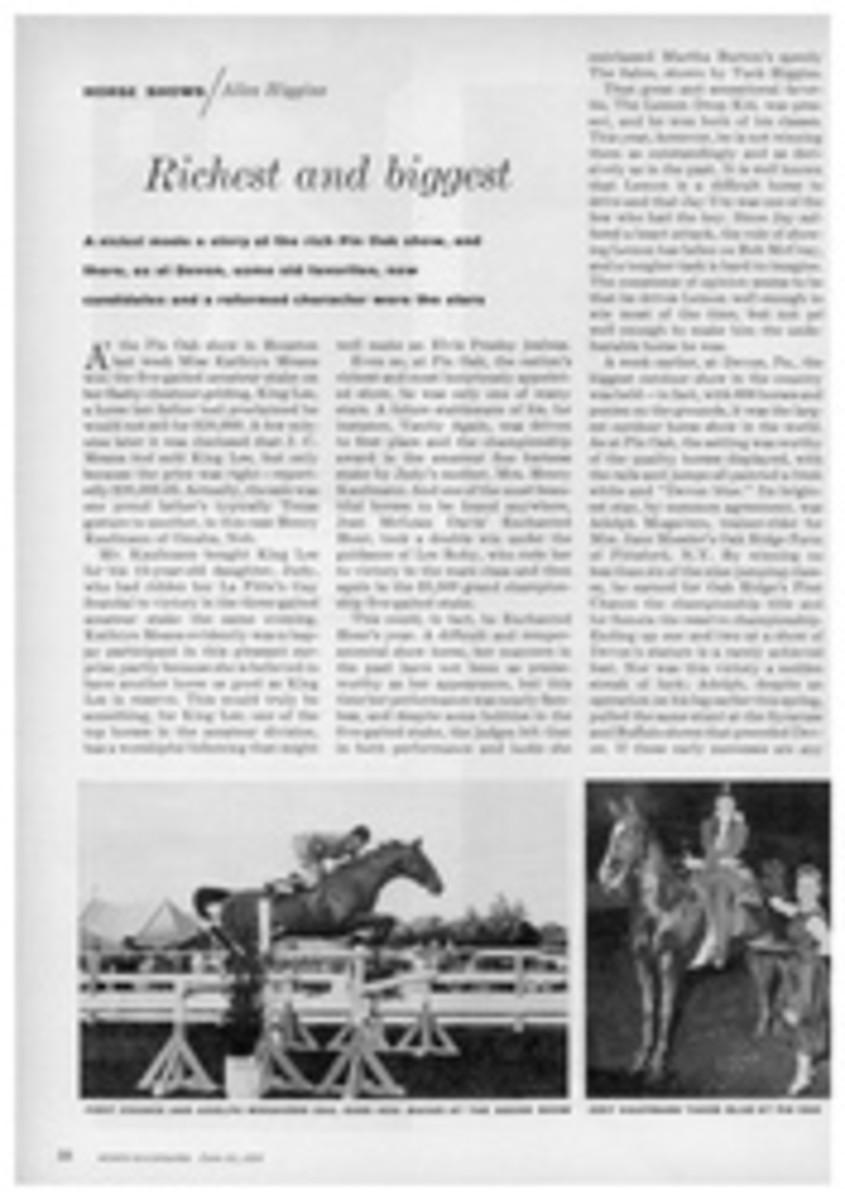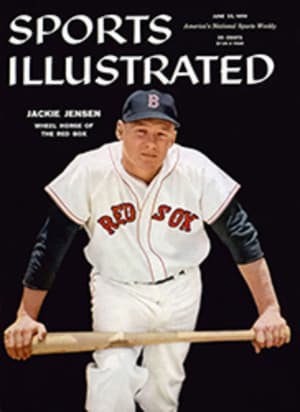
BOLT UPRIGHT
For a decade now, Tommy Bolt, a man in whom the Barrymore strain runs strong, has attracted such attention by throwing clubs, announcing his reformation, throwing tantrums, announcing his reformation, talking a bit too ebulliently in the wrong situations, announcing his reformation, and all in all building himself into such a successfully controversial personality (known variously as Thunder Bolt and Terrible-tempered Tommy) that sometimes he has succeeded in almost completely obliterating the primary fact that he is one of golf's finest shotmakers. Well, Tommy will now have a much harder time obscuring his upright standing as a sound technician and player of unusual talent. Last week, over the very arduous Southern Hills course in Tulsa, Okla., Thomas Henry Bolt who, at the age of 39, has won his share of tournaments but never before a major championship, carried off the 58th U.S. Open and carried it off with great aplomb and a wonderfully sustained exhibition of careful and commanding golf.
Over a course which could be terrible-tempered in its own right, Bolt played his four rounds without once going over 72, a feat that takes on a bit more dimension when you realize that no other player in the field escaped without scoring at least a 75 on one round. During the full course of the tournament, Bolt was never behind. His opening 71 placed him in a triple tie for the lead. Another 71 gave him a one-shot margin at the halfway mark which he widened to three shots with a superb 69 on Saturday morning. On Saturday afternoon, on his fourth and final round, he started somewhat loosely but collected himself without a gesture and was never in serious difficulty en route to a 72 and a total of 283, a comfortable four shots ahead of the runner-up, Gary Player of South Africa. In retrospect, it was Bolt's tournament all the way, and he becomes the first man to win this championship by more than a single stroke since Hogan spread-eagled the field at Oakmont in 1953.
Bolt's best-played 18, very possibly, was his opening 71. On this round he missed only two fairways. Accuracy of this high degree was very important, for the Oklahoma-grown Bermuda grass rough, though not quite so high as an elephant's eye, was tall and thick and matty and so altogether defeating that frequently the only prudent move was to take the wedge and play humbly back to the fairway. This fearsome rough, moreover, was only one element among the several which, when linked together, conspired to make Southern Hills on the first day of the Open a brutally unfair test of golf skill.
To begin with, the players had to contend with a gusty wind from out of the southwest which made it difficult to hit ample fairways and to gauge the shots to the greens. Nothing wrong with this. This is part of golf, of course. By noon, however, this wind had dried out the well-watered greens. They quickly became so hard that, especially when a player was hitting an approach downwind, the ball would not sit down even when it had been struck well. In addition—and this was really the straw that broke the camel's back—the pins had been positioned, with few exceptions, in extremely tough and sometimes ludicrous positions on the severely contoured greens. On a number of downwind holes they were at the deep front of the trapped green. On several terraced greens they were set just above the crest of the upslope, with the result that the approach shot that landed next to the pin just above the slope (as a good shot had to) took off like a jack rabbit and left the player, not with a fairly short putt, but with a 30-footer or more or a chip from the fringe rough. It is not being at all extravagant to state that most of the players were overcome with a sense of grogginess after suffering through their first series of misfortunes, and after a while it just took the heart out of them and they could fight the conditions no more. Not that statistics ever tell the story but, for what it is worth, on the first day the 162 players collected among them a total of only 141 birdies and one eagle, with 38 of the birds and the eagle coming on the downwind par-5 16th, the one comparatively soft touch on the course.
Southern Hills, when a wind is roaming over it, and it almost invariably is, presents a very sturdy test for even the best golfers without needing to be souped up as if it were a hotel-resort course that would otherwise be a pushover. For the second and ensuing rounds—bearing in mind that southwestern courses naturally present certain distinct problems of preparation—it was treated properly. The pins were set in much more sensible positions. The greens, regardless of Open traditions, were watered at regular and frequent intervals. Then there was a premium for hitting good shots and all of a sudden it seemed like golf again.
The turning point—and a dramatic one it was—came midway through the second day when Gary Player, a very attractive golfer, cut loose with a great burst of five birdies on his second nine to bring in a 68. Until this happened, everyone was wondering if the par of 70 would be broken at any time during the tournament, and young Player was cheered quite in the spirit of a St. George who had slain a dragon. After this everyone knew the course would yield to brilliant golf, and the Open settled down and became a good Open, somewhat akin in its general flavor to the 1955 edition at Olympic, if less exciting because of its milder drama on the final day.
Bolt began that final day with a one-shot edge on Player, 2 on Frank Stranahan, 4 on Julius Boros and Charley Coe (the low amateur all the way) and 5 on Gene Littler. Only Littler and Boros were able to mount anything like serious challenges. Hitting his shots better than he has since Kittansett in the 1953 Walker Cup match, Littler made a stirring rush in the morning. At one time 4 under par, he finished that round with a 67 to draw within three shots of Bolt. He started his afternoon round, however, with bogeys on the first two holes and never got going after that. Boros, straight as a string all day in another one of his many marvelous showings in the Open, missed a succession of holeable birdie putts when he was working on a sub-par round in the morning, and his steadiness in the afternoon made no indentation on Bolt, who was himself steadiness personified. Off the tee Tommy had erratic spells, but his irons were so solid and his putting was so right and his ability to hit the clutch shots so continuous that the long grind of 36 holes was really one triumphal march for him.
This week everyone is wondering what sort of a champion old Tommy will make. In a way, it is hard to know. Basically histrionic, he has always picked his roles, and they are several. When he chooses to be surly, he is very good at it. When he chooses to be Old Gentleman Tom, he can give David Copperfield two shots a side. When he chooses to be himself, he reveals a warm heart and a bright fondness for camaraderie. Not that anyone wishes to reform Tommy Bolt completely, but in recent months, beginning with the Greensboro Open, he has entered on another period of self-stated reformation, during which time he has never (well, almost never) come close to losing his temper or deciding to lose it and he has played some of the very best golf of his career. It has been colorful enough to attract the galleries in and of itself, and he seems a happier man both on and off the golf course. Tommy, one would hazard the guess, has won the championship at exactly the right time. If he wears the conqueror's crown with the skill and the spirit with which he earned it—and he undoubtedly will—his reign should be happy and prosperous and filled with fine golf.
[originallink:10484271:41747]
PHOTO
WITH GREAT APLOMB...AND A SUSTAINED EXHIBITION OF COMMANDING GOLF

